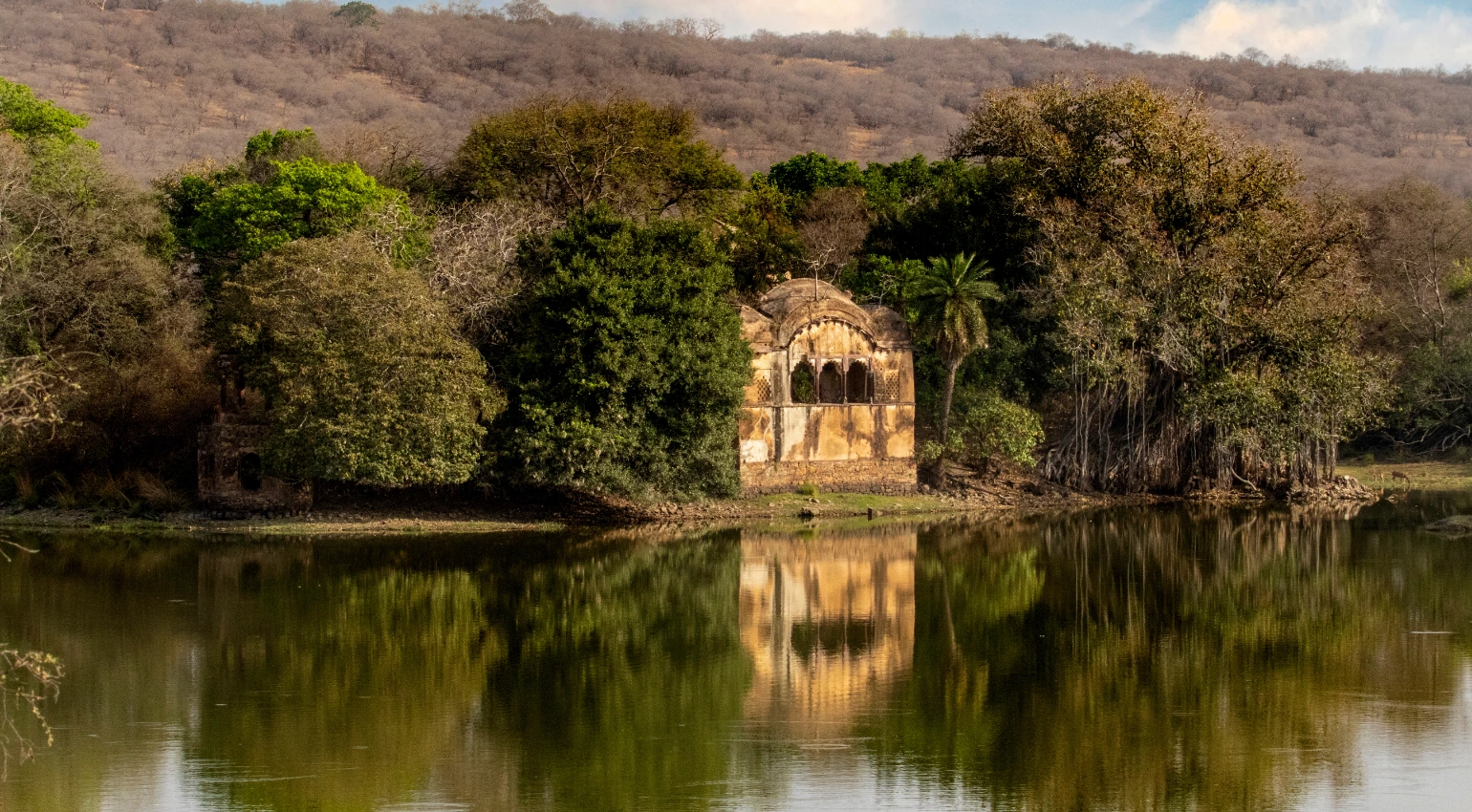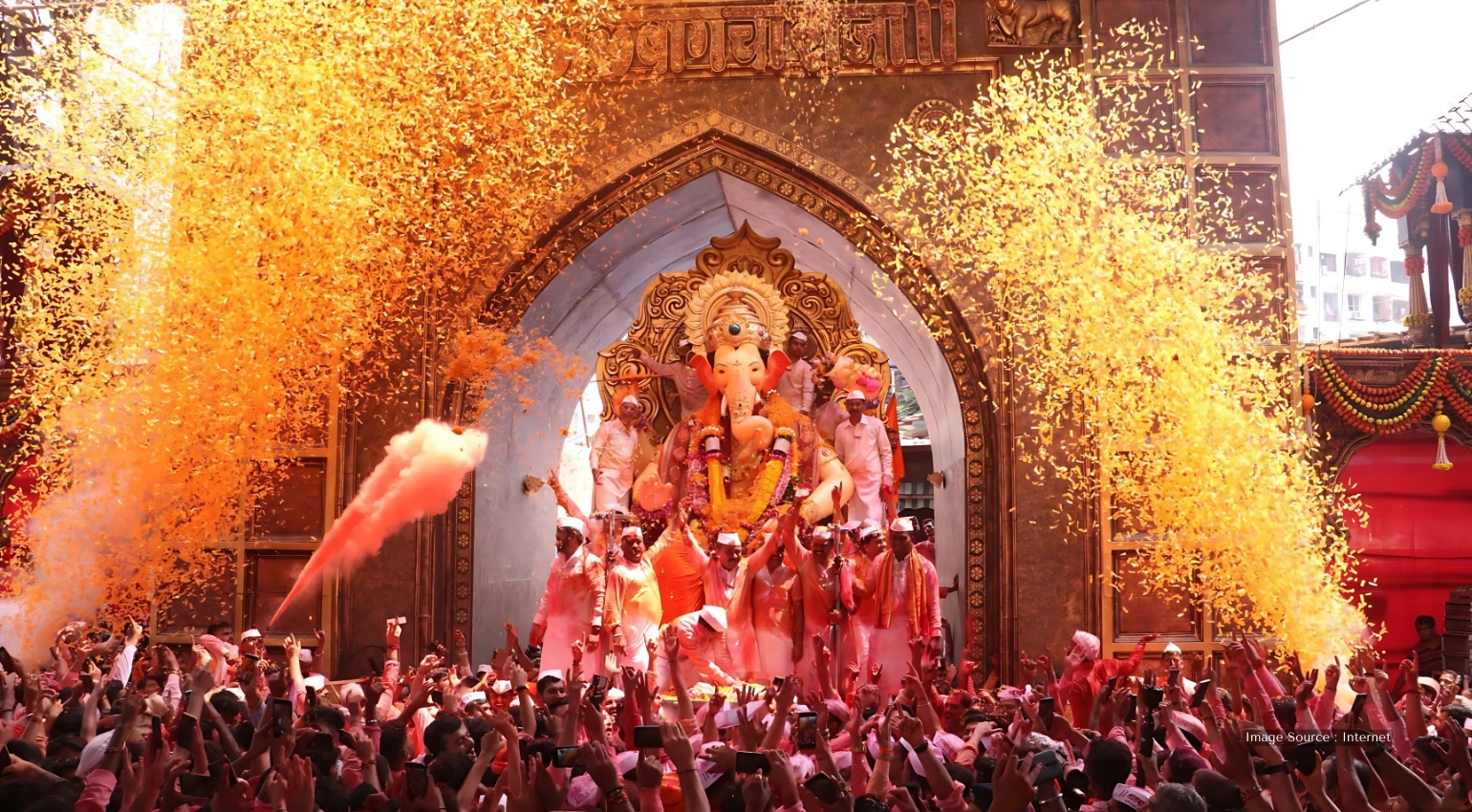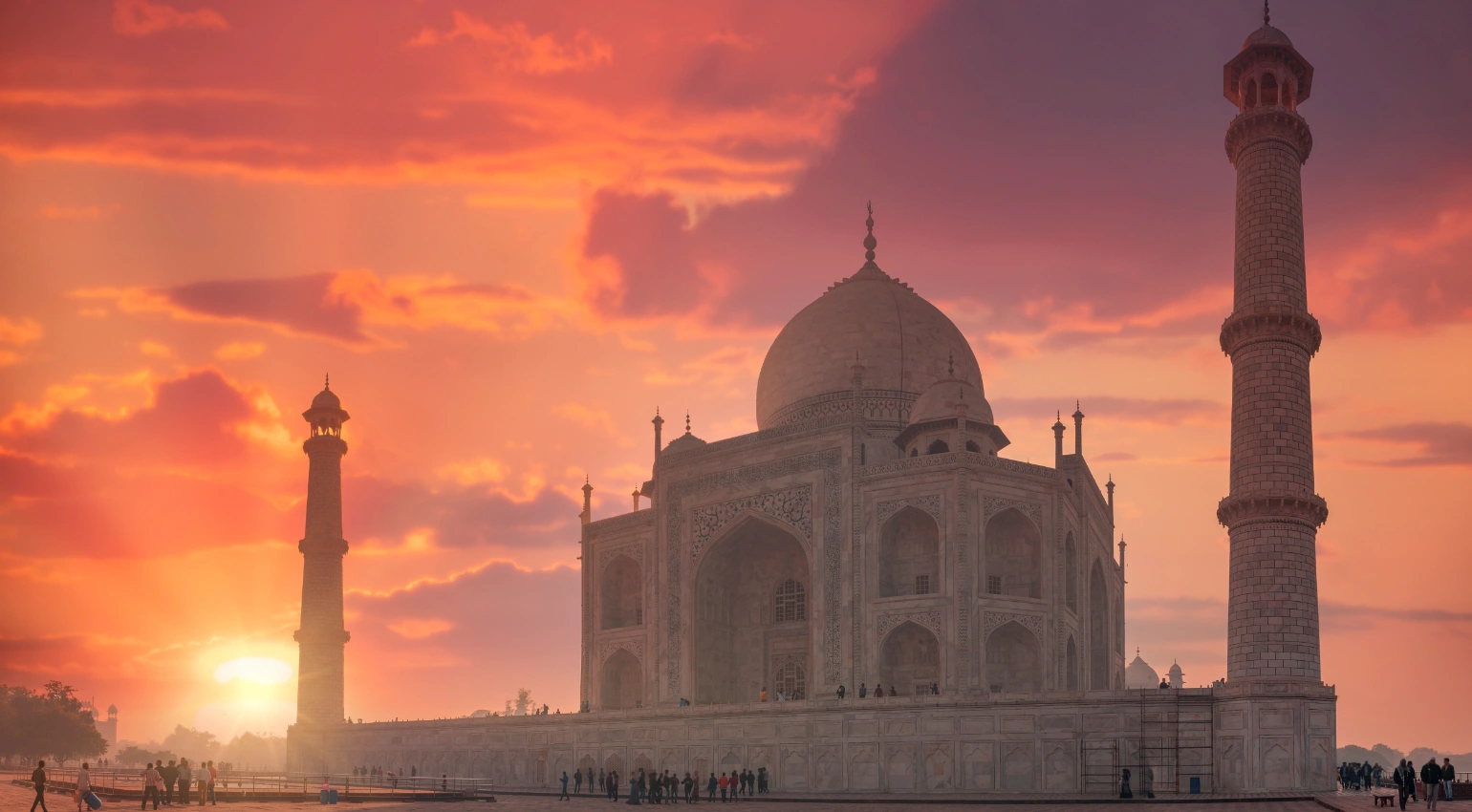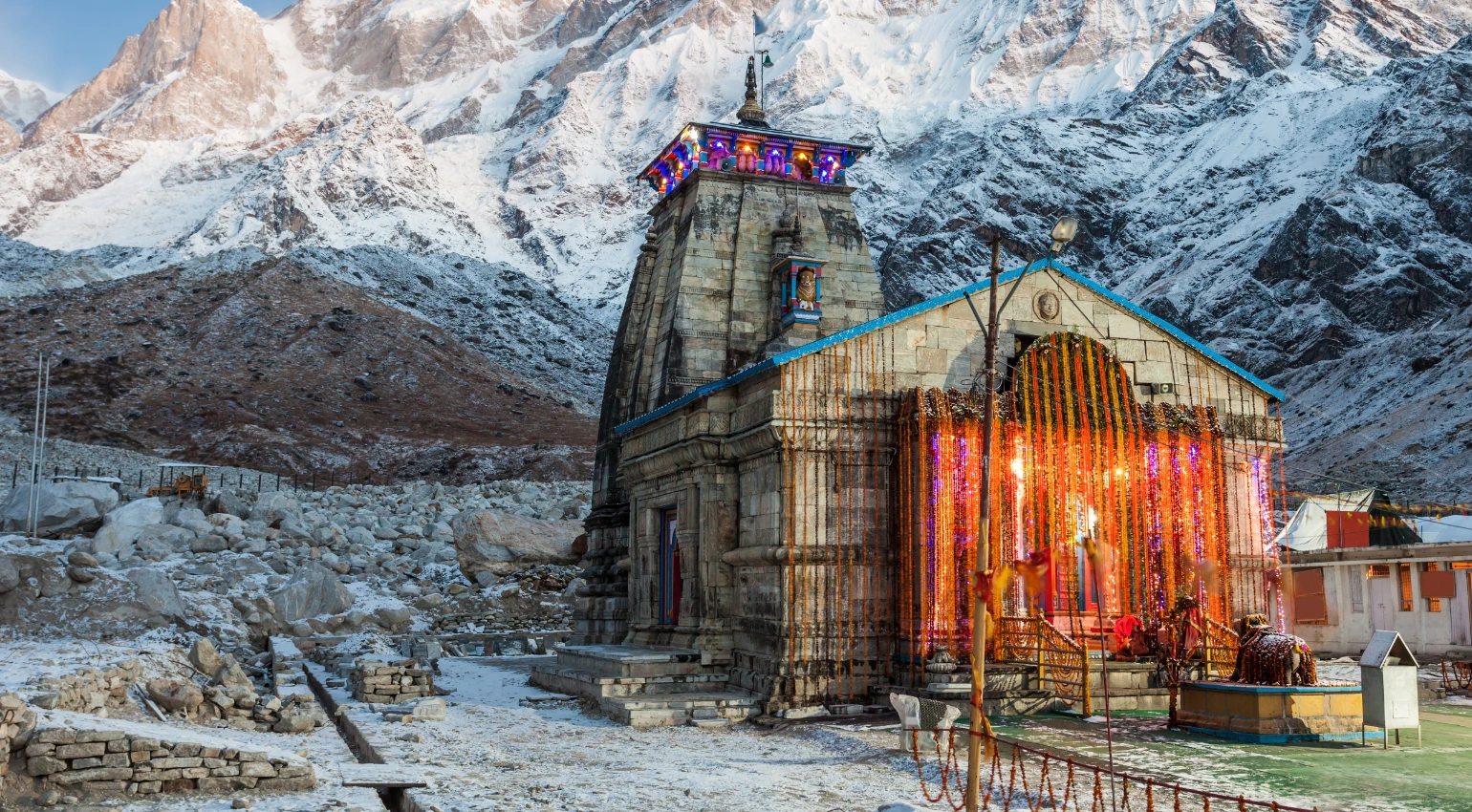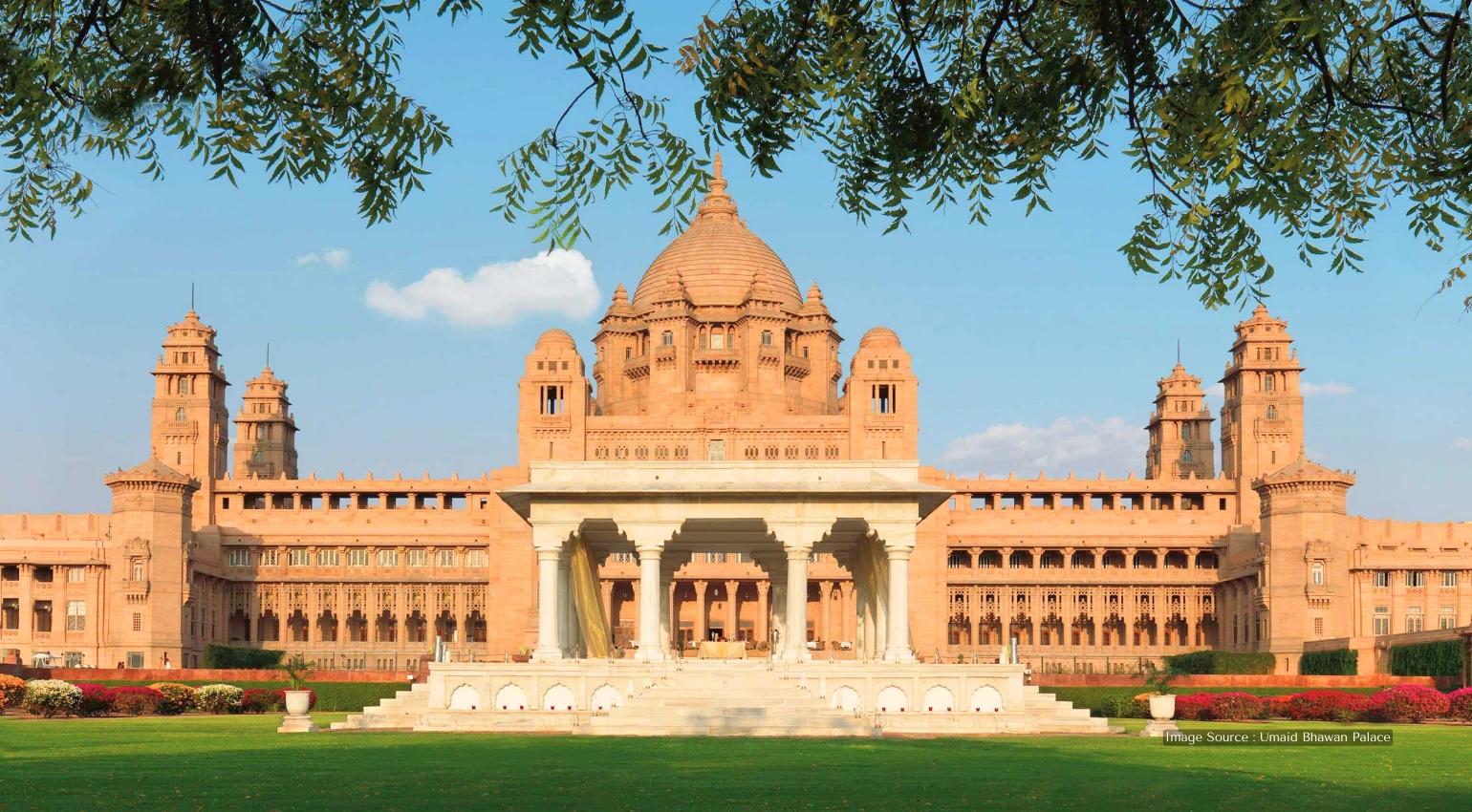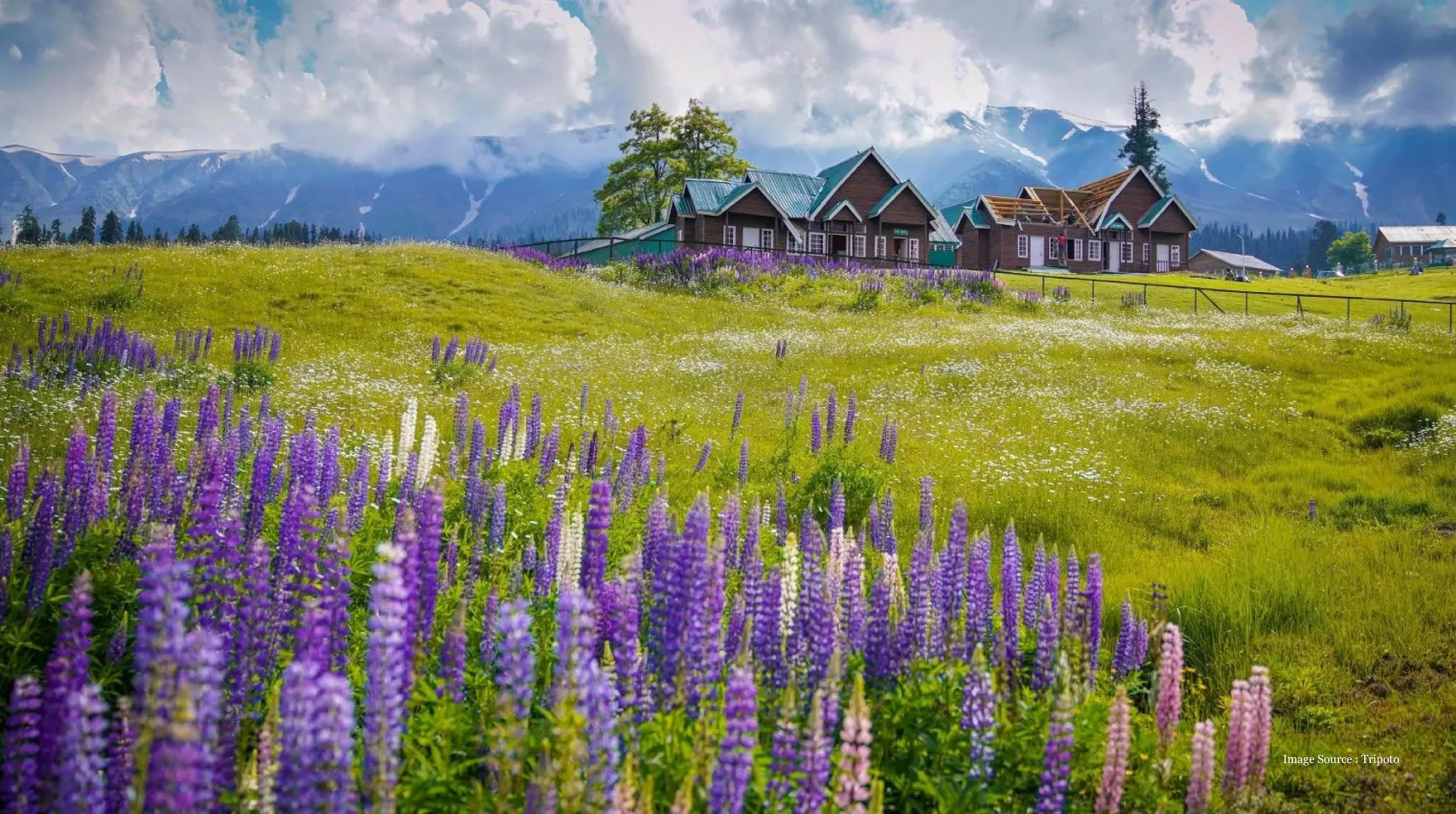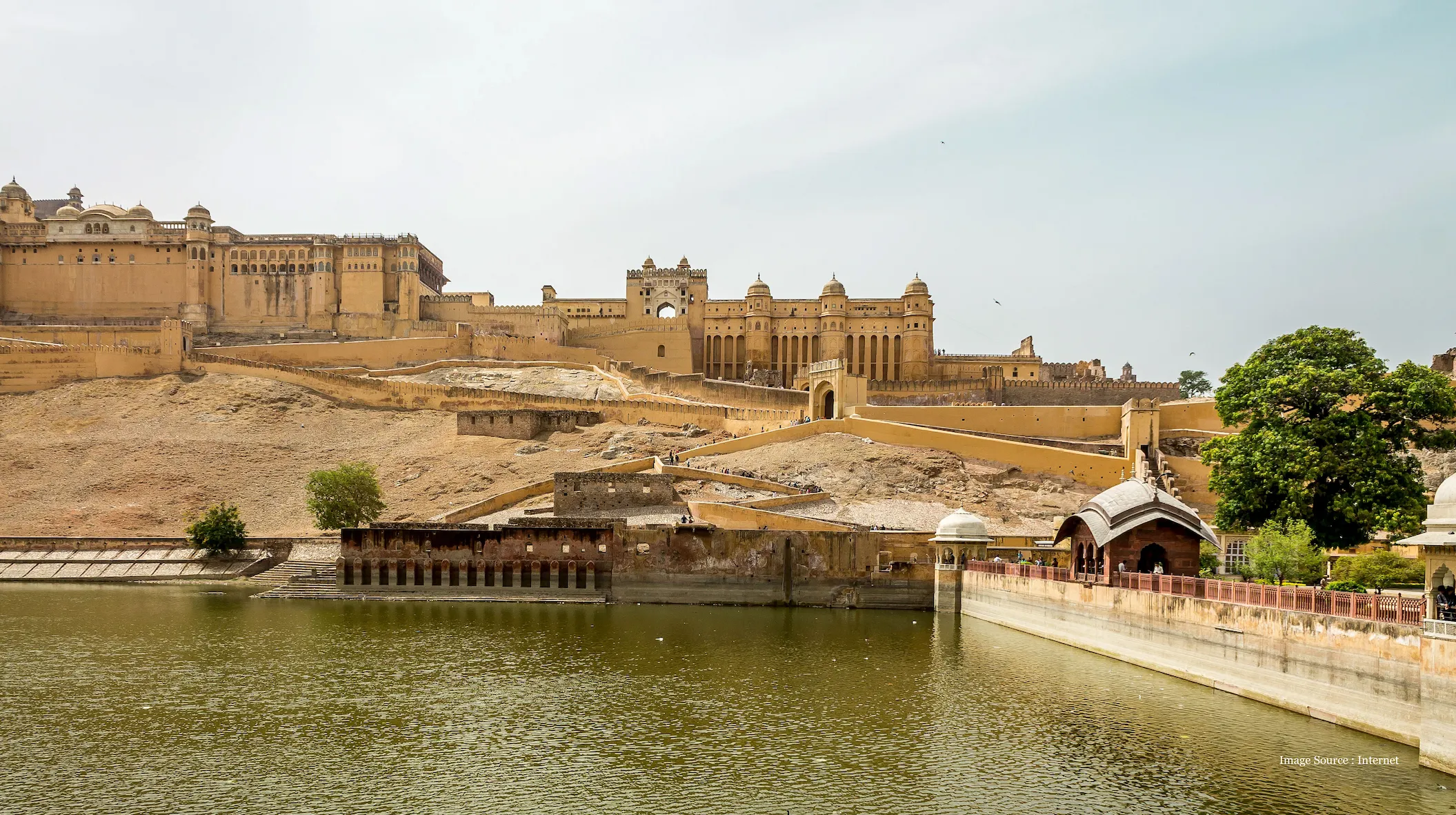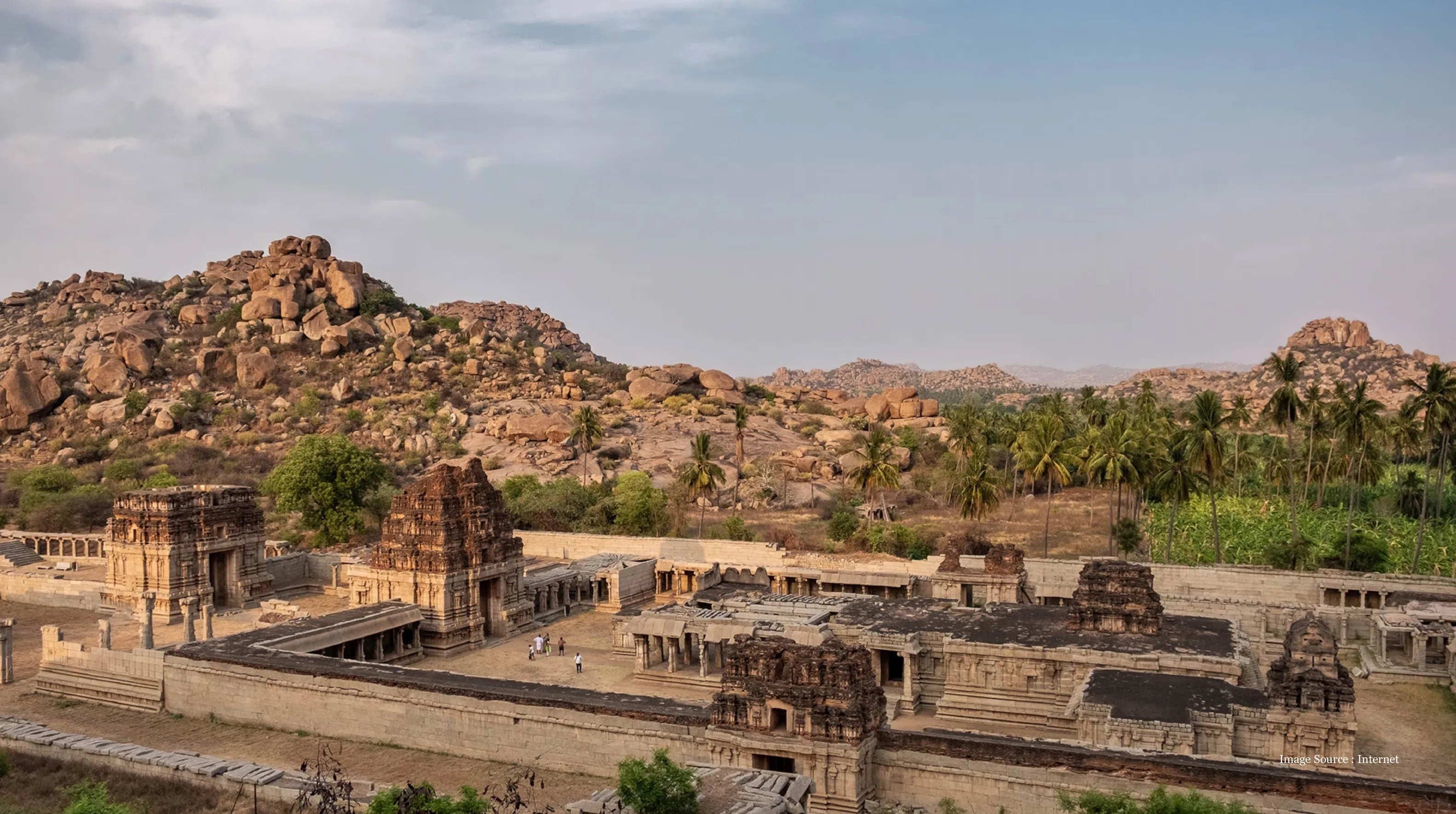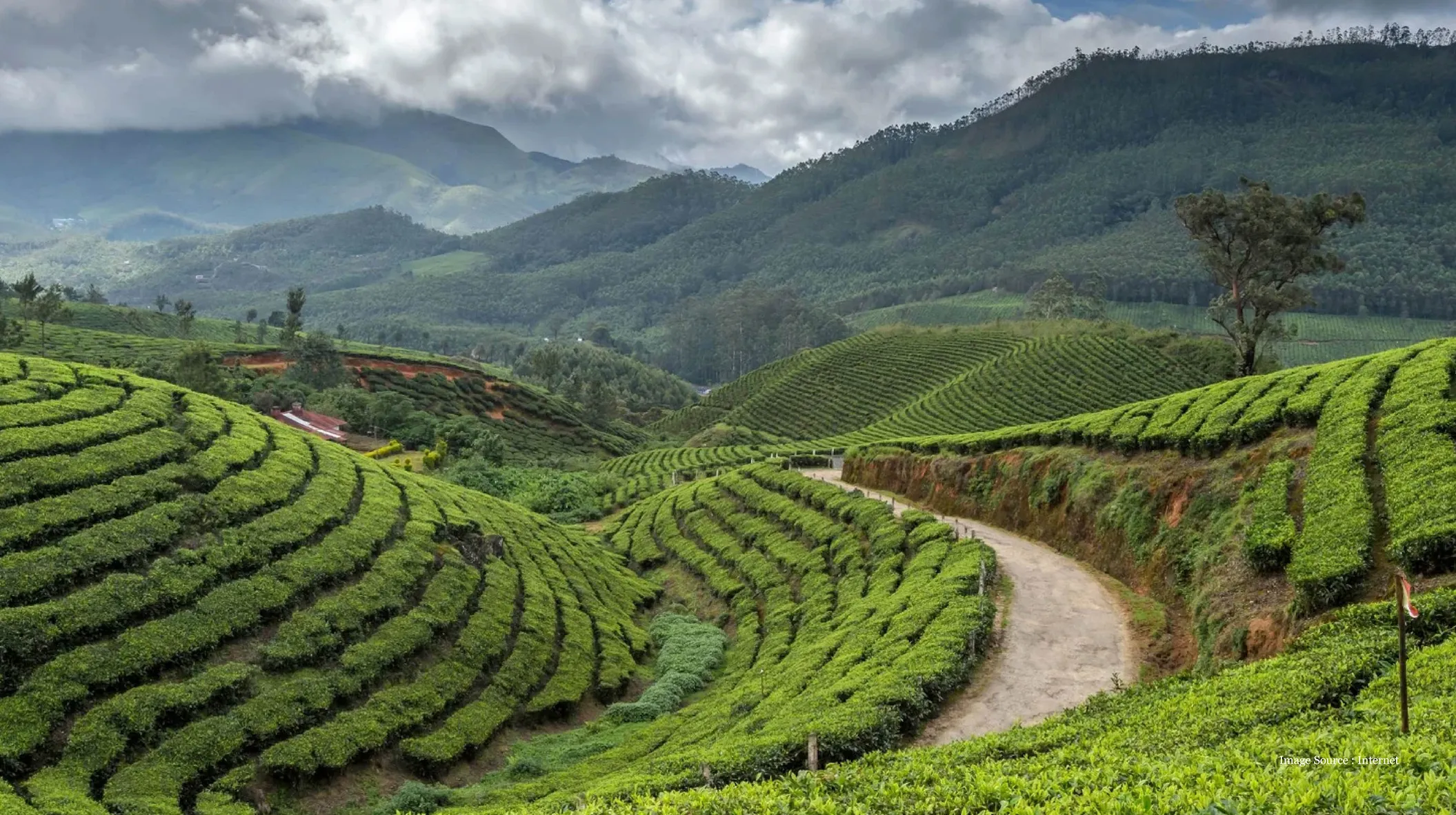Last Updated : Oct 29, 2025 | View Count : 1345 | Read Time : 8 min
Fort Stay in Rajasthan: Sleeping Where Kings Once Lived
There's something about staying in an actual fort that makes you feel like you've time-traveled. Not a hotel designed to look like a fort. An actual centuries-old fortress where battles were fought, where royal families lived, where history happened. That's what a fort stay in Rajasthan gives you, and honestly, it's one of those experiences that changes how you think about travel.
Rajasthan has more forts and palaces than any other Indian state. Some are ruins, some are museums, and a lucky few have been converted into hotels where you can actually stay. These aren't your typical heritage hotels trying to recreate a historical vibe. These are legitimate fortresses built between the 14th and 20th centuries, complete with massive walls, turrets, courtyards, and royal apartments that have been carefully restored.
Let me walk you through what you need to know about experiencing a fort stay in Rajasthan.
What makes a fort stay in Rajasthan different from regular heritage hotels?
Rajasthan's fort hotels are actual centuries-old fortresses where battles were fought and royal families lived, not replicas. You stay in authentic royal suites with hand-painted ceilings, intricate mirror work, and walls designed to withstand cannon fire. Properties like Neemrana Fort Palace, Six Senses Fort Barwara, and Alila Fort Bishangarh balance authentic architecture with modern luxury.
Table of Content
- What Does It Feel Like to Stay Where Maharajas Once Ruled?
- Which Rajasthan Forts Offer the Most Authentic Royal Experience?
- What Architectural Marvels Will You Discover Within Fort Walls?
- What Royal Rajasthani Cuisine Awaits in These Historic Kitchens?
- Planning Your Fort Stay Experience
- FAQ
What Does It Feel Like to Stay Where Maharajas Once Ruled?
The first time you walk into your room at a fort hotel and realize you're staying in an actual royal apartment, it hits different than checking into even the fanciest regular hotel.
The scale is the first thing that gets you. These rooms weren't designed for regular people. They were designed for royalty who wanted to show off their wealth and power. High ceilings, sometimes 15 or 20 feet tall. Walls that are three feet thick because forts needed to withstand cannon fire. The proportions are just different from modern architecture.
Then there are the details. Hand-painted frescoes on the walls and ceilings that took artists months or years to complete. Intricate mirror work where thousands of tiny mirrors are embedded in plaster to catch and reflect light. Marble inlay work with semi-precious stones creating floral patterns. Carved stone screens (called jalis) that let air flow while maintaining privacy. Every surface shows craftsmanship that doesn't exist anymore at this level.
What surprised me most was how these spaces make you slow down. Modern hotels are efficient. You check in, drop your bags, maybe admire the view, then head out. Fort rooms invite you to linger. You find yourself just sitting there looking at the painted ceiling, touching the carved doorframes, trying to imagine the people who lived here centuries ago.
The views from forts are always dramatic because forts were built in strategic locations. Some sit on hilltops overlooking cities and countryside for miles. The Rajput rulers who built them picked these spots for military advantage, but the result is that you wake up to incredible vistas.
Most fort hotels are small, with maybe 10 to 30 rooms instead of hundreds. This means you're not dealing with crowds. Sometimes you'll walk through entire sections of the fort and not see another guest. The feeling of having this massive historical monument basically to yourself creates this sense of privilege that's hard to describe.
At night, when the fort is lit up and you're having dinner on a terrace under the stars, the whole experience comes together. You're not just staying at a cool hotel. You're participating in a living tradition of hospitality that goes back centuries.
TL;DR: Fort hotels offer authentic royal suites with massive ceilings, hand-painted frescoes, and intricate mirror work, creating spaces that naturally make you slow down and imagine centuries of history.
Which Rajasthan Forts Offer the Most Authentic Royal Experience?
Rajasthan has dozens of forts converted to hotels, but some stand out for how well they balance authenticity with comfort.
Neemrana Fort Palace sits about two hours from Delhi, making it one of the most accessible fort hotels. Built in 1464, this 15th-century fort sprawls across multiple levels on a hill. The property has been restored beautifully while keeping the fort's character intact. The rooms vary significantly, from simpler ones to elaborate royal suites. The hanging gardens are spectacular.
Neemrana works well as a weekend getaway from Delhi or as your first stop on a Rajasthan tourism package tours itinerary. The proximity to Delhi means you can experience a fort stay without committing to traveling deep into Rajasthan.
Six Senses Fort Barwara takes luxury fort stays to another level. This 14th-century fort near Ranthambore has been restored by the Six Senses group with incredible attention to detail. Every modern luxury you could want (amazing spa, multiple restaurants, beautiful pools) exists within this authentic fort structure.
What makes Barwara special is how Six Senses managed to add all their wellness programming and luxury amenities without compromising the fort's integrity. You can do yoga in centuries-old courtyards, get Ayurvedic treatments in palace rooms, and explore the fort's temples and architecture.
The location near Ranthambore means you can combine your fort stay with tiger safaris. Spotting tigers in the morning, then returning to your royal fort for spa treatments? That's a hard itinerary to beat.

Alila Fort Bishangarh near Jaipur is a restored 18th-century fort perched on a hill. The Alila group did an incredible job with the restoration, keeping the fort's warrior character while adding their signature modern aesthetic. The rooms are a mix of restored palace chambers and newly built spaces that blend seamlessly with the old structure. The infinity pool has fort views that are spectacular.
The proximity to Jaipur (about 90 minutes) makes it convenient to include in any Rajasthan itinerary. You can easily visit Jaipur's attractions during the day and return to your fort in the evening.
Khejarla Fort near Jodhpur is a 17th-century fort that's still owned by the same family who built it. This is a smaller property with just 25 rooms, giving it an intimate feeling. The current royal family still lives in part of the fort and are genuinely involved in running the hotel, which adds authenticity.
What I appreciated about Khejarla was how family-run it felt. The owners share stories about their ancestors and the fort's history. The food is home-style Rajasthani cooking, often using family recipes passed down through generations.
All of these properties are considered among the best hotels in Rajasthan for good reason. They've figured out how to preserve history while providing the comfort and service that modern travelers expect. Getting to them usually involves a private chauffeur-driven car from major cities, which is the standard way to travel for Rajasthan for tourism and makes reaching these remote locations comfortable.
What Architectural Marvels Will You Discover Within Fort Walls?
Fort architecture in Rajasthan is incredibly sophisticated, and staying in one lets you appreciate details you'd miss on a day visit.
The defensive architecture is the foundation. Forts were designed to protect against enemy armies, which meant thick walls, strategic gate placements, and clever defensive features. Many forts have multiple gates you pass through to reach the inner courtyards. These gates aren't just entrances. They're defensive choke points designed to slow attacking forces.
The walls themselves are engineering marvels. Built from local stone, they're thick enough to withstand cannon fire. Some walls are 15 to 20 feet thick at the base. The bastions at wall corners provided elevated positions for guards. Now they make excellent spots for watching sunsets.
Inside the protective walls, the royal apartments were designed for beauty and comfort. Courtyards serve as the organizing principle, providing natural light and ventilation while maintaining privacy. The zenana (women's quarters) had its own courtyards, separate from areas where men gathered.
The jharokhas (overhanging enclosed balconies) are signature features. These let royal women observe courtyard activities while maintaining privacy. Now they make beautiful architectural features and great spots for photos.
The jali work (carved stone screens) combines beauty with function. The geometric patterns let air flow while providing privacy and shade. The craftsmanship is incredible when you look closely. Each screen was hand-carved from single pieces of stone.
Frescoes and murals cover walls and ceilings in many royal apartments. These paintings depict everything from hunting scenes to religious stories to daily life. The pigments came from natural sources, which is why many have survived centuries.
Mirror work creates these magical rooms where walls and ceilings are embedded with thousands of tiny mirrors. When lit by candles or lamps, these rooms sparkle and glow. The effect is stunning, and many forts have at least one room showcasing this technique.
Staying in a fort lets you experience all of this at your own pace. You can wander through courtyards early in the morning when light is beautiful. You can examine the jali work up close. Day visitors rush through in a couple hours. Fort guests can take their time appreciating centuries of craftsmanship.
What Royal Rajasthani Cuisine Awaits in These Historic Kitchens?
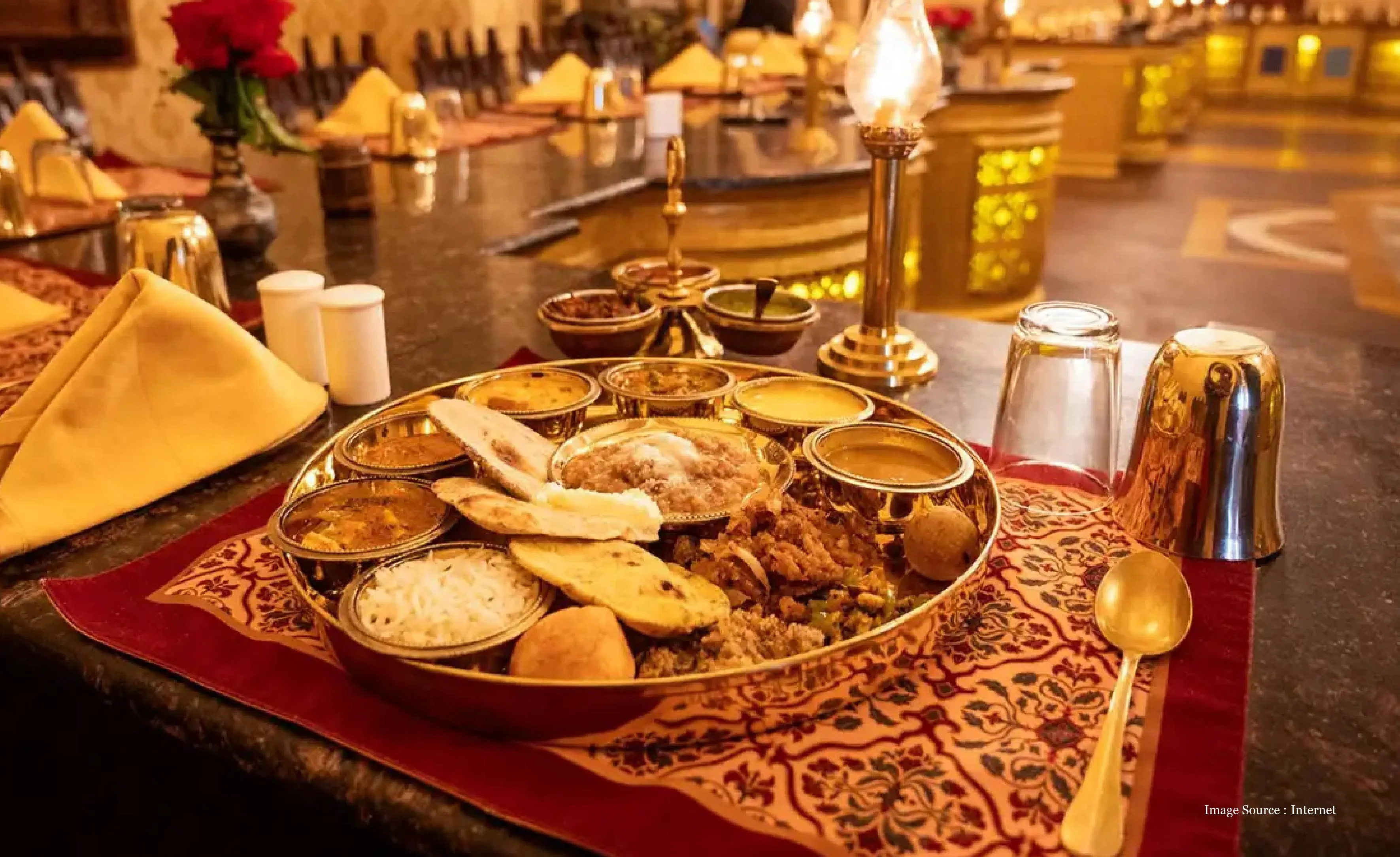
Food at fort hotels goes way beyond standard hotel fare. Many properties serve royal Rajasthani cuisine using recipes that were once prepared exclusively for maharajas and their families.
Rajasthani royal cuisine developed because of the desert environment and warrior culture. The lack of fresh vegetables year-round meant heavy use of lentils, dairy products, and preserved ingredients. The hunting tradition meant game meats featured prominently. The result is a cuisine that's rich, often spicy, and completely different from what most people think of as Indian food.
Laal maas (red meat curry) is probably Rajasthan's most famous dish. Mutton cooked in a fiery red gravy made with special chilies and yogurt. It's spicy, but the heat has depth. Many fort hotels tone down the spice level for guests who aren't used to it.
Safed maas (white meat curry) is the opposite approach. Mutton or chicken cooked in a white gravy made with cream, almonds, and subtle spices. This was considered more refined and often served for formal occasions.
Ker sangri is a vegetable dish unique to Rajasthan using desert plants. Ker are small berries, sangri are beans from a desert tree. They're cooked with spices to create this tangy dish that's completely unique.
Dal baati churma is probably Rajasthan's most iconic meal. Baati are hard wheat rolls, churma is sweetened crushed baati, and dal is lentil curry. You break the baati, pour ghee over it, eat it with dal, and finish with churma for dessert. It's filling, rustic, and utterly satisfying.
The breads in Rajasthan go way beyond naan. Bajre ki roti (millet flatbread), missi roti (gram flour flatbread with spices), and various regional breads appear at fort hotel meals. They're cooked in traditional tandoors and served hot.
Sweets show another side of royal cooking. Ghevar, mawa kachori, mohan thal, these aren't everyday foods. They're special occasion treats that were served at royal celebrations.
Many fort hotels offer cooking demonstrations where you can learn to make some of these dishes. Watching the chefs work with traditional techniques gives you appreciation for the skill involved.
The dining settings add to the experience. Many forts serve dinner in courtyards under the stars, or in formal dining halls where state banquets once happened. The combination of historic settings and historic recipes creates something special.
For tourism in Rajasthan focused on cultural experiences, the food at fort hotels provides insight into royal life and regional culinary traditions that you won't get at regular restaurants.
TL;DR: Fort hotels serve authentic maharaja recipes like fiery laal maas (red meat curry), refined safed maas (white curry), unique desert vegetable ker sangri.
Planning Your Fort Stay Experience
Most travelers include fort stays as part of longer Rajasthan itineraries rather than standalone trips. A typical approach might be spending 2-3 nights each at 2-3 different forts while moving between major cities.
The best time is October through March when the weather is pleasant. Fort properties work year-round, but summer heat (April through June) can be intense. Monsoon season (July through September) brings some relief and green landscapes.
Getting to fort properties almost always requires private transportation. Most sit away from major cities in rural or hilltop locations. A private chauffeur-driven car arranged through a luxury travel agency makes reaching these properties straightforward and comfortable.
Booking fort stays benefits from working with travel specialists who know these properties and can secure good rates or arrange special experiences. Many fort hotels offer packages including meals, activities, and local excursions.
Fort properties range widely in price depending on the level of luxury. Neemrana is relatively affordable. Six Senses Fort Barwara is premium luxury priced accordingly. Most fall somewhere in between, offering good value for genuine heritage experiences. The memories from staying in actual forts, sleeping where royalty slept, eating royal recipes in historic settings, those stick with you in ways regular hotel stays don't.
FAQs
1. Do I need to book fort stays far in advance?
For popular properties and peak season (October through March), booking 2-3 months ahead is wise. Fort hotels have limited rooms, so they fill up. Last-minute bookings might work during off-season but risk missing out on better rooms or entire properties being full.
2. Can I visit forts just for meals without staying overnight?
Some fort hotels allow non-guests for meals with advance reservation. This lets you experience the food and setting without the full stay. Day visits for tours are less common at hotel forts since they're operating properties with guest privacy to consider.
3. Are fort stays authentic or too modernized?
The good fort hotels balance authenticity with comfort well. The architecture and atmosphere are genuinely historic. Modern additions like bathrooms and air conditioning are done sensitively to maintain character while making stays comfortable. You're experiencing how modern descendants of royal families have adapted these spaces for contemporary luxury hospitality.
plan your bespoke india journey today
tell us what inspires you - and we will handcraft an experience that mirrors your elegance, pace & personality.
START PLANNINGBlogs Categories
It is a Sanskrit verse taken from an ancient Bharat (Indian) scripture
which means ‘The Guest is like God’.
In Bharat (India), guests are always welcomed with open arms and given
You Will Like These Too...
It is a Sanskrit verse taken from an ancient Bharat (Indian) scripture
which means ‘The Guest is like God’.
In Bharat (India), guests are always welcomed with open arms and given
TRAVELOSEI PROMISE
What To Expect?
The Real India,
Re-Imagined For You
India is not just a destination - it's a world with-in the world. TRAVELOSEI go far beyond guide-books to offer you an India that is authentic yet exclusive, spiritual yet sophisticated delivered through private doors, rare access, and impeccable attention to details.
Trusted By Global Elites
From World Class Leaders to Forbes Listed Families and international Royalties to visionary CEOS.
Our clientele chooses us for one reason - We Know India. Over two decades of providing experiences which aren't just luxurious - they are intimate, curated & wildly rare.
Bespoke Travel Experience
For those who seek truth in detail, art in hospitality, and identity in experience. Our Luxury Travel Architect work discreetly and personally with you to craft travel experiences that go beyond 5 Stars, where every detail whispers luxury - and legacy.
White-Glove Concierge
24 X 7 Dedicated Concierge Support even in the wildest corners of India. At TRAVELOSEI, our concierge team ensures that everything-from airport- tarmac pick-ups, last minute reservations and private spiritual sessions - is handled before you even ask.

